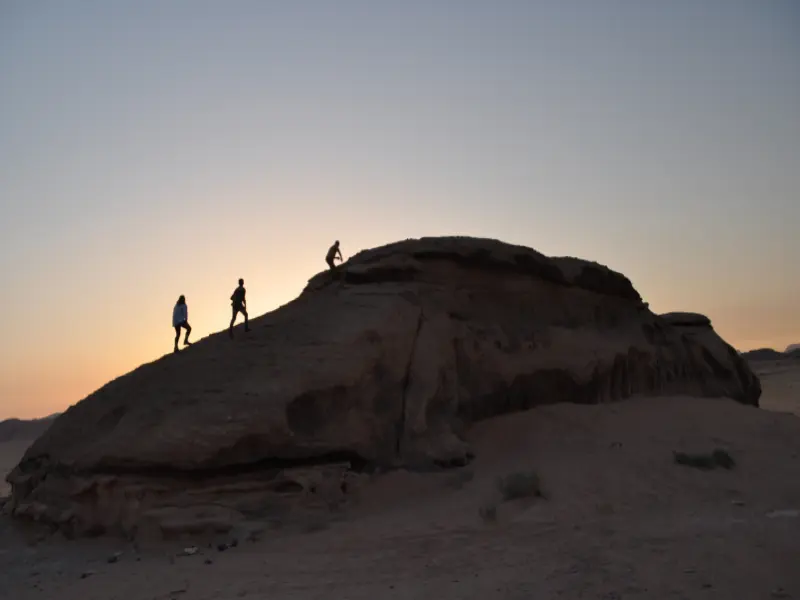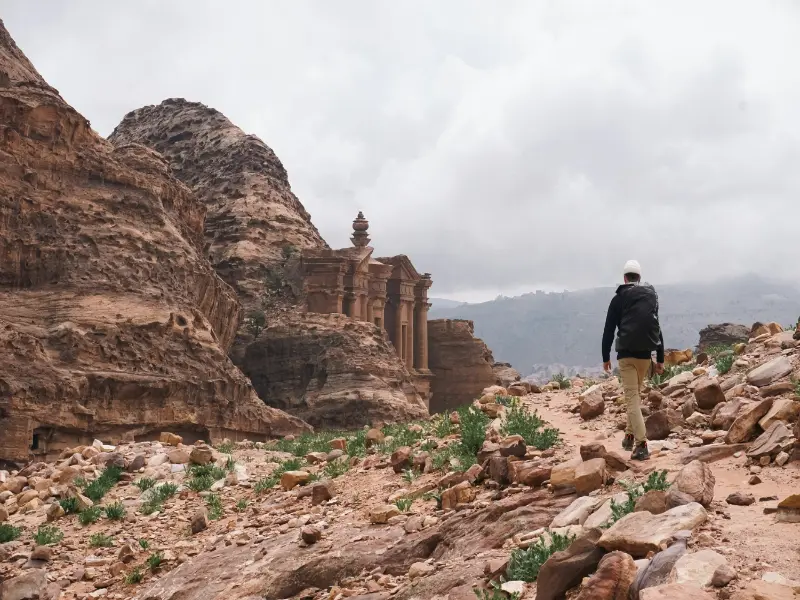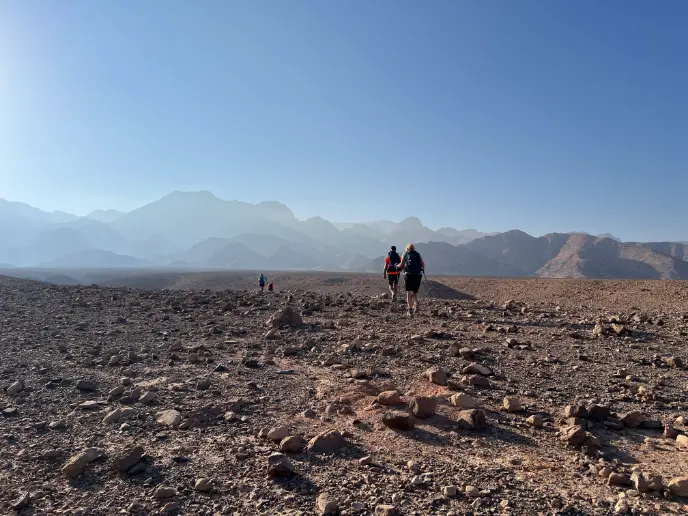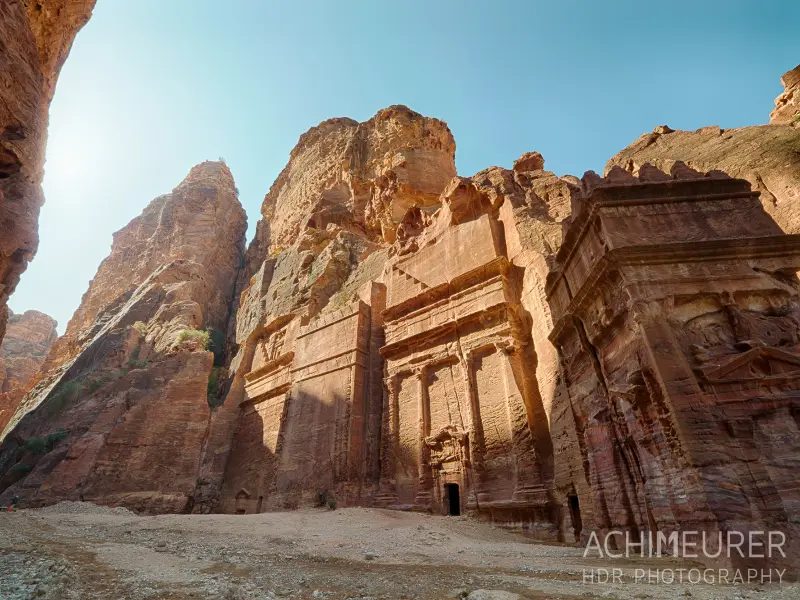
Beneath the Red Sea tour
An unforgettable adventure as you combine the thrill of diving with the rich history of Petra and the stunning landscapes of Wadi Rum in Jordan. This tour offers a perfect blend of underwater exploration, ancient wonders, and breathtaking desert scenery.
Tour details:
Duration:
3 Days 2 Nights
Category:
Travel Activity
Type:
Diving and Snorkeling
Start in:
Jordan-Aqaba Airport
Finish in: Jordan-Aqaba Airport
Tour Features
| Heritage and Culture | |
| Photography | |
| Relaxation and Wellness | |
| Water Activities |
Inclusions
Breakfast, and dinner meals
Dive master during the dives
English speaking site guide in Petra for 2.5 hours
Entry fees to all sites
Jeep safari tour in Wadi Rum
Jordan visa formalizations
Meet and assist upon arrival
Modern A/C vehicle based on tour participants
Professional English-Speaking Driver
Scuba Divig and Snorkelling
Exclusions
All type of drinks
Any other services not mentioned
Flight fare
Lunch meal unless mentioned in the itinerary
Tips and gratitude for the service providers
Highlights
Discover Desert Landscapes of Wadi Rum
Discover the Red Sea’s hidden gems by diving beneath the surface
Explore the Ancient City of Petra
Relax and Enjoy in Aqaba on the Red Sea
Itinerary
1
Aqaba airport - Aqaba
Our representative will meet you upon arrival at Aqaba airport and assist with your visa to Jordan. After, meet our driver who will transfer you to your hotel in Aqaba where you can drop your luggage. After, the driver will take you to the dive shop for orientation and to get ready for the two shore dives and as an option a third dive (including lunch on the beach). This night you also have the option to do a night dive. For this, we do need to know at least 3 days in advance so that the dive shop can get permission from the Marine Authority. Dive 1 - Rainbow Reef / Cedar Pride (6 - 27 m) Rainbow Reef is named because the reef is shaped like a rainbow. It starts at around 6m and drops down to 18m on the top of the reef. A deeper gulley runs down the North side of the reef forming a nice wall along the side of the reef. There is a telecommunications cable that runs over to Egypt running down this gulley. The reef is covered with a fantastic display of feather stars all colors of the rainbow. The Cedar Pride was a Lebanese freighter that sustained extensive damage in a fire in 1982; she was then scuttled for divers and now lies on her port side across two reefs with a surface buoy situated at her stern. The wreck has been colonised by many hard and soft corals which makes this one very stunning dive site. Its interior is very stable and can be explored with swim-throughs and an air pocket amongst many of its features. The ship is about 80m in length and is best explored the seaward side where you can see the deck and intricate structures with perhaps the best feature being the crowu2019s nest which is covered in coral and really stands out against the clear blue water. Dive 2: Japanese Gardens (0 - 40 m) Japanese Garden is a world renowned dive site with a magnificent colorful reef bed that starts in the shallows and gently slopes away into the depths. A great site for diving and photography though please be aware of the glass bottom boats that also frequent the area particularly when surfacing at the end of the dive. For creatures at the site, there are turtles, lyre tail groupers, royal angelfish, schools of barracuda and fusiliers as well as moray eels and big clam shells.
2
Aqaba, boat dives - Wadi Rum - Aqaba
You can choose any 2 or all 3 of the dives in this group; lunch on the boat is include:
GROUP 1
Dive 1: First Bay North to First Bay South (6 - 30 m; "drift dive")
Situated within the marine park, First Bay North consists of sandy plains and coral patches with a pinnacle situated west of the mooring point. The pinnacle is covered in red soft coral and can be found by heading North past the sponge covered old fish cage. Occasional stingrays can also be found snoozing between the coral and many cleaning stations can lead to good species interaction at this dive site. At First Bay South, crossing the sand, there are several small pinnacles in which can be found yellow mouthed morays and anemones. One of the pinnacles, at about 7m is a very populated cleaning station with banded boxer shrimp that may even clean a diver or two! The sea grass is also worth a look with scorpion fish and lion fish lurking amongst the grass as well as various juvenile fish.
Dive 2 - King Abdullah Reef (6 - 30 m)
A popular dive site named after King Abdullah II, a fan coral covered in multi-coloured sponges is one of the highlights with pennant fish, torpedo rays and blue spotted rays often spotted around the coral. The south of the dive site is covered in different corals and in the shallows going back north, schools of fusiliers can sometimes be found in and around the pinnacles towards the end of the dive. A great site for photography and remember to keep your eyes peeled for turtles as well who are also frequent visitors.
Dive 3: Black Rock (0 - 40 m)
The sloping reef spans from 12-30m with pinnacles, cabbage coral and fringing reef all interspersed with each other. Plates can also be seen which is part of the coral growth research. Turtles are frequently found either munching on the coral or taking a snooze. A safety stop can be taken in amongst the grass where snowflake and common grey morays can be seen, the keen eye may even see a red sea walkman. One other thing to be aware of is a potential current which can be up to one knot.
OR
GROUP 2
Dive 1: Gorgan 1 (0 - 16 m)
Two large Gorgonian corals are the main feature which can be found down the coral slope. This is very much a coral sightseeing tour with a wide variety and three large pinnacles also extending from the bottom to the surface. The middle pinnacle holds a cleaning station and around the northern pinnacle, shoals of big eye emperors and sergeant major fish can be seen. Many invertebrates and fish can be found inhabiting the dive site.
Dive 2: 7 Sisters and the Tank (3 - 20 m)
The tank (an American M42 anti-aircraft tank) is set at 6m and was scuttled in 1999 by the Jordanian Royal Ecological Diving Society (JREDS) to create an artificial reef. Away from the tank there is the u2018fairy ringu2019 and the u2018seven sistersu2019, two sets of pinnacles with the usual critters around making this a great shallow dive making the most of your air and camera.
Dive 3: Eel Canyon (14 - 30 m)
A collection of garden eels sitting at the bottom of the canyon gives this dive site its name. The table coral and oil drum are useful navigation points and if look under coral ledges then youu2019re likely to find some lionfish with morays also sometimes sitting in the canyons. There is a swim through at the bottom of one of the spurs of coral though this can be a bit of tight squeeze.
After your boat dives, the dive shop will return you to your hotel where you can shower and rest. Because of the altitude of Wadi Rum, you must wait 3 hours after the dives are complete before going there. Around 2pm (depending on the time of year), our driver will meet you at the hotel and continue to Wadi Rum where you will experience the ride of your life during a 3 hour 4x4 safari. After, return to your hotel in Aqaba for overnight.
3
Aqaba - Petra - Aqaba airport
Our driver will meet you at hotel at 8am and then start the 2 hour drive to Petra. We will arrange your entrance fees and hire you an English speaking site to start the tour of Petra for about 3 hours covering the main attraction of the site at the lower part. You and the guide will start from the main gate all the way through the Siq to visit the Treasury, Street of Facades, the Theater, all the way down to the Nymphium and Qaser El- Bent. Have lunch inside Petra at Al Basin Restaurant, then you will have some free hours on your own to explore further places, such as the Monastery. After, according to your flight details on this day, we will be transferred to Aqaba airport for final departure.
FAQ
How to book this tour?
You can easily book this tour by sending a completed booking form to our team or by contacting us directly at info@jitours.com. If the tour is priced and available for online booking, you also have the option to book it directly through our website. Once your booking is received, you will receive a confirmation shortly.
Can I amend this tour itinerary?
Yes, we understand that every traveler’s needs are unique. You can request amendments to the tour itinerary to better suit your preferences and schedule. Please send your desired changes along with the tour link you wish to adjust to info@jitours.com, and our team will do their best to accommodate your requests, subject to availability and logistical considerations.
Do I need to be certified to go diving
Yes, certification is required for most scuba diving activities. However, many dive centers offer introductory dives for beginners that don't require certification. For snorkeling or free diving, certification is usually not needed, but basic training is recommended.
(1).webp)






